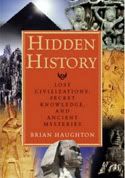The Green Children of Woolpit
These mercenaries would hardly have brought their families with them. After their defeat, the remaining Flemish soldiers scattered throughout the countryside, and many were attacked and killed by the local people. Surely a landowner like Richard de Calne, or one of his household or visitors, would have been educated enough to recognise that the language the children spoke was Flemish. After all it must have been fairly widespread in eastern England at that time.
Harris’s theory of the children hiding out in Thetford forest, hearing the bells of Bury St. Edmunds and thus being led through underground passages to Woolpit also has problems of geography. First of all, Bury St. Edmunds is 40km from Thetford forest; the children could not have heard church bells over such a distance. In addition, the flint mines are confined to the area of Thetford forest, there are no underground passages leading to Woolpit, and if there were, it is almost 50km from the forest to Woolpit, surely too far to walk for two starving children. Even if the Green Children originated from Fornham St. Martin, it is still a 16km walk to Woolpit, and as to the ‘considerable river’ mentioned by the girl – the River Lark is far too narrow to qualify for this.
The Green Children and Folklore

Woolpit Village Sign
There are many aspects of the Woolpit tale which are found in English folk beliefs, and some see the Green Children as personifications of nature, related to the Green Man or Jack-in-the-Green of English folklore, and even the weird Green Knight of Arthurian myth. Perhaps the children are related to the elves and fairies which until a century or two ago, were believed in without question by many country folk. If the Green Children story is a fairytale, then it has the unusual twist of the girl never returning to her otherworldly home, but remaining married and living as a mortal.
Perhaps Ralph of Coggeshall’s slightly enigmatic comment that the girl was ‘rather loose and wanton in her conduct’ is a suggestion that she had retained some of her fairy wildness. The colour green has always been associated with the otherworld and the supernatural. The children’s fondness for green beans does suggest another link with the otherworld, as beans were said to be the food of the dead. In Roman religion, the Lemuria, was an annual festival in which people used offerings of beans to exorcise the evil ghosts of the dead (the Lemures) from their homes. In ancient Greece, Rome and Egypt, as well as in Medieval England, beans were believed to contain the souls of the dead.
Though the Woolpit story is included in two 12th century sources, it must be born in mind that the chronicles of the time, though describing political and religious events, also listed many signs, wonders and miracles that would not be accepted today, but were widely believed at the time, even by educated men and women. Perhaps then, the strange apparition of the Green Children was a symbol of disturbed and changing times intermingled with local mythology and folk beliefs of fairies and the afterlife. Whatever the truth of the matter, unless descendents of ‘Agnes Barre’ can be traced, as some have suggested, or further contemporary documentary evidence unearthed, the story of the Green Children will remain one of England’s most puzzling mysteries.
Further Reading
Appleby, J.T. The Troubled Reign of King Stephen. G. Bell & Sons Ltd. 1969.
Briggs, K.M. A Dictionary of Fairies. Penguin Books Ltd. 1977.
Moore, S. (ed). Fortean Studies: No. 4. John Brown Publishing. 1998.
Shuker, K. The Unexplained: An Illustrated Guide to the World’s Natural and Paranormal Mysteries. Carlton Books Ltd. 2003.
http://anomalyinfo.com/articles/sa00022.shtml – ‘The Green Children of Woolpit.’
http://www.woolpit.org/home.htm – Homepage of the village of Woolpit.
Read more about the Green Children of Woolpit
in my book Hidden History
